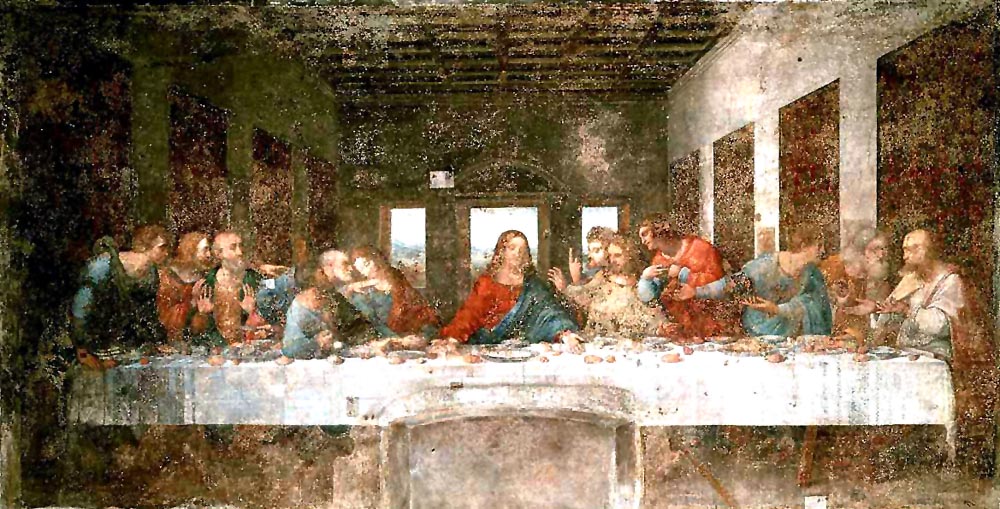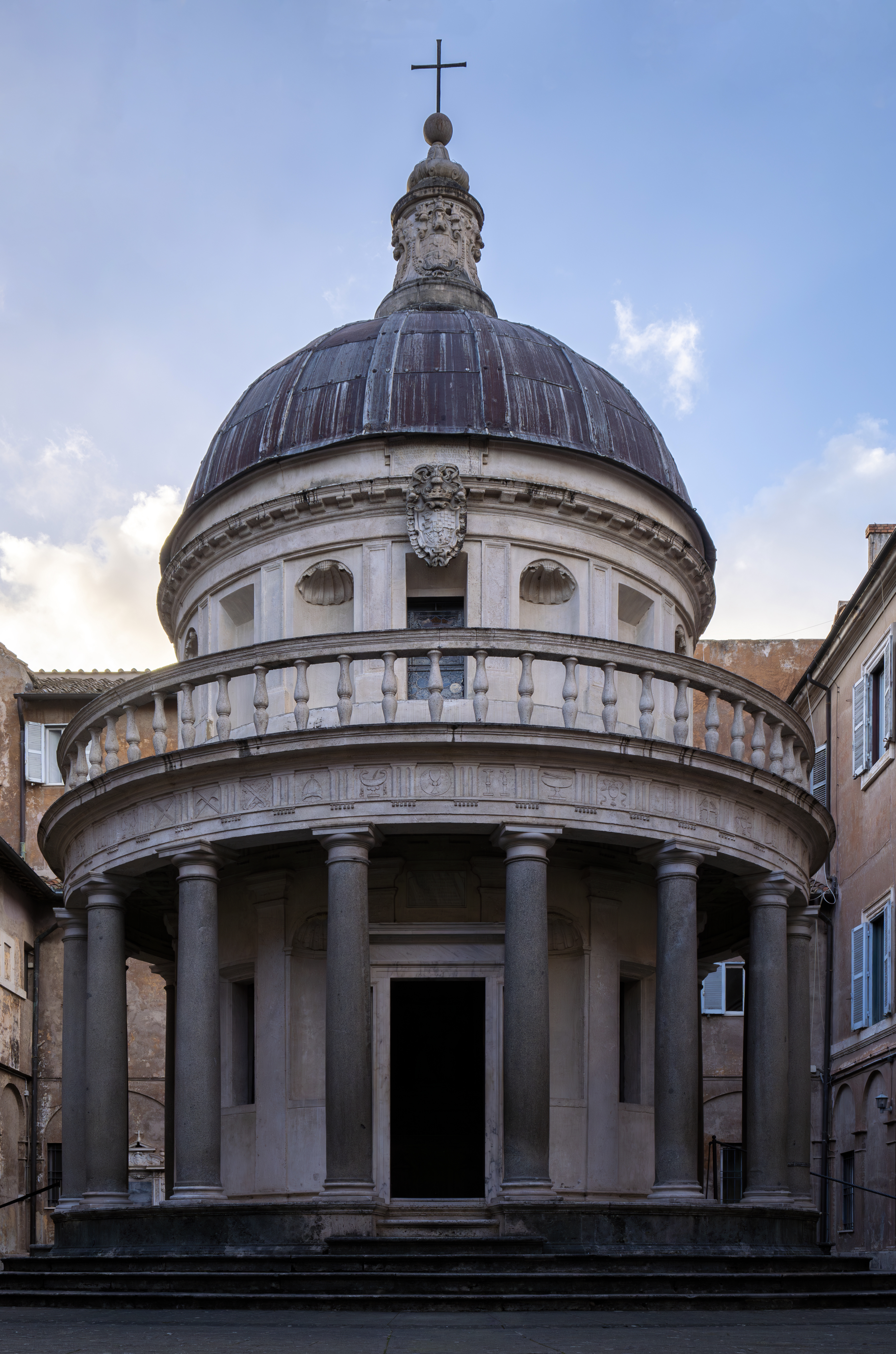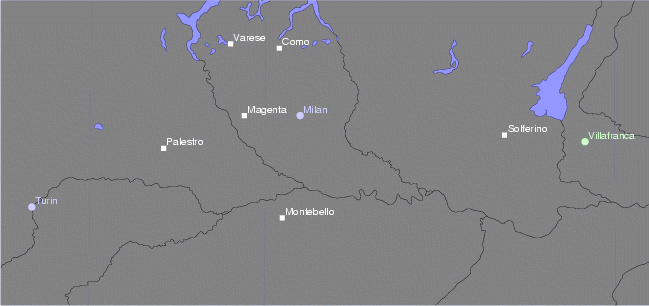|
Monument To Leonardo Da Vinci
The monument to Leonardo da Vinci is a commemorative sculptural group in the Piazza della Scala, Milan, unveiled in 1872. It is surmounted with a statue of Leonardo da Vinci, while the base has full-length figures of four of his pupils: Giovanni Antonio Boltraffio, Marco d'Oggiono, Cesare da Sesto, and Salaì, Gian Giacomo Caprotti (under the name Andrea Salaino). The monument was executed by the sculptor Pietro Magni (sculptor), Pietro Magni, beginning in 1858; due to Milan's transition from the Kingdom of Lombardy–Venetia, Lombardo-Venetian Kingdom to first the Kingdom of Sardinia (1720–1861), Kingdom of Sardinia and then the Kingdom of Italy, funding for its construction had problems and delays. After its inauguration the monument was much criticised because of the choice of location and because it was considered a legacy of the Austrian administration. History An early project In 1834, references are found to a "noble and highly cultured fellow citizen of ours" from ... [...More Info...] [...Related Items...] OR: [Wikipedia] [Google] [Baidu] |
Pietro Magni (sculptor)
Pietro Magni (October 21, 1817January 20, 1877) was an Italian sculptor. He is best known for his ''Girl Reading'', first carved in 1856; today the original may be seen in Galleria d'Arte Moderna, Milan, while copies exist in numerous other museum collections, e.g. in Palace of Ajuda, Palácio Nacional da Ajuda, Lisbon. Among Magni's other works are a public monument to Leonardo da Vinci on Piazza della Scala and several marble sculpture groups; he also executed statues for the Milan Cathedral in the 1860s. Biography Born in Milan, he studied at that city's Brera Academy, Accademia di Belle Arti di Brera before moving to the workshop of Abbondio Sangiorgio. Later in his career he became influenced by Tuscan sculptor Lorenzo Bartolini, whose work he first encountered in 1837. He made the traditional study trip to Rome, where, in 1849, during the unrest of the Risorgimento, he joined Giuseppe Garibaldi’s ranks. Later returning to Rome, he achieved public prominence with his sta ... [...More Info...] [...Related Items...] OR: [Wikipedia] [Google] [Baidu] |
The Last Supper (Leonardo)
''The Last Supper'' ( or ) is a mural painting by the Italian High Renaissance artist Leonardo da Vinci, dated to , housed in the refectory of the Convent of Santa Maria delle Grazie, Milan, Santa Maria delle Grazie in Milan, Italy. The painting represents the scene of the Last Supper of Jesus with the Apostles in the New Testament, Twelve Apostles, as it is told in the Gospel of Johnspecifically the moment after Jesus predicts his betrayal, Jesus announces that one of his apostles will betray him. Its handling of space, mastery of perspective, treatment of motion and complex display of human emotion has made it one of the Western world's most recognizable paintings and among Leonardo's most celebrated works. Some commentators consider it pivotal in inaugurating the transition into what is now termed the High Renaissance. The work was commissioned as part of a plan of renovations to the church and its convent buildings by Leonardo's patron Ludovico Sforza, list of dukes of Mil ... [...More Info...] [...Related Items...] OR: [Wikipedia] [Google] [Baidu] |
Antonio Beretta
Antonio Beretta (17 April 1808, in Milan – 14 November 1891, Rome) was the first mayor of Milan under the Kingdom of Italy from 1860 to 1867. He was appointed Senator for life by Victor Emmanuel II in 1862. He was a member of the Società Storica Lombarda. He died in Rome in 1891. Biography Antonio Beretta was an important and controversial figure in the history of Milan, remembered in particular as the city's first elected mayor in 1860, at a crucial time for the nascent Kingdom of Italy. A member of the Lombard bourgeoisie and protagonist of the provisional government in 1848, he was exiled after 1849. Upon his return from exile in 1859, he was chosen by the House of Savoy to lead Milan. His mandate (until 18 July 1867) was marked by an ambitious urban modernisation plan that profoundly transformed the city. Among his initiatives were the redevelopment of '' Piazza del Duomo'', oversaw the construction of the ''Galleria Vittorio Emanuele II'', the establishment of the ''Ci ... [...More Info...] [...Related Items...] OR: [Wikipedia] [Google] [Baidu] |
Giuseppe Pasolini
Giuseppe Pasolini (7 February 1815 in Ravenna – 4 December 1876) was an Italian politician. He initially served as a councilor of the Papal States and advised the pope to name Pellegrino Rossi as leader of the Council in Rome. After Rossi's assassination, he negotiated with Marco Minghetti, but left Rome for Tuscany by 1849. In 1860, he was named a Senator in the Kingdom of Italy. From 1862 to 1863, he was minister of foreign affairs of the Kingdom of Italy. In 1866, he was appointed the royal commissioner of Venice. In 1876, he was appointed President of the Senate, with both the endorsement by the Pope and Minghetti, but soon fell ill and retired.Memoir of Count Giuseppe Pasolini. He was a recipient of the Order of Saints Maurice and Lazarus The Order of Saints Maurice and Lazarus () (abbreviated OSSML) is a Roman Catholic dynastic order of knighthood bestowed by the royal House of Savoy. It is the second-oldest order of knighthood in the world, tracing its lineage to ... [...More Info...] [...Related Items...] OR: [Wikipedia] [Google] [Baidu] |
Bramante
Donato Bramante (1444 – 11 April 1514), born as Donato di Pascuccio d'Antonio and also known as Bramante Lazzari, was an Italian architect and painter. He introduced Renaissance architecture to Milan and the High Renaissance style to Rome, where his plan for St. Peter's Basilica formed the basis of the design executed by Michelangelo. His Tempietto (San Pietro in Montorio) marked the beginning of the High Renaissance in Rome (1502) when Pope Julius II appointed him to build a sanctuary over the spot where Peter was martyred. Life Urbino Bramante was born under the name Donato d'Augnolo, Donato di Pascuccio d'Antonio, or Donato Pascuccio d'Antonio in Fermignano near Urbino. Here, in 1467, Luciano Laurana was adding to the Palazzo Ducale an arcaded courtyard and other Renaissance features to Federico da Montefeltro's ducal palace. Bramante's architecture has eclipsed his painting skills: he knew the painters Melozzo da Forlì and Piero della Francesca well, who were ... [...More Info...] [...Related Items...] OR: [Wikipedia] [Google] [Baidu] |
Massimo D'Azeglio
Massimo Taparelli, Marquess of Azeglio (24 October 1798 – 15 January 1866), commonly called Massimo d'Azeglio (), was a Piedmontese-Italian statesman, novelist, and painter. He was Prime Minister of Sardinia for almost three years until succeeded by his rival Camillo Benso, Count of Cavour. A moderate liberal and member of the Moderate Party associated with the Historical Right, d'Azeglio hoped for a federal union between Italian states. As Prime Minister, d'Azeglio consolidated the parliamentary system, getting the young King Victor Emmanuel II to accept his constitutional status, and worked hard for a peace treaty with Austria. Although himself a Roman Catholic, he introduced freedom of worship, supported public education, and sought to reduce the power of the clergy in local political affairs. As a senator, following the annexation of the United Provinces of Central Italy, d'Azeglio attempted to solve the Roman Question through reconciliation between the Vatican and the ne ... [...More Info...] [...Related Items...] OR: [Wikipedia] [Google] [Baidu] |
Camillo Benso, Count Of Cavour
Camillo Paolo Filippo Giulio Benso, Count of Cavour, Isolabella and Leri (; 10 August 1810 – 6 June 1861), generally known as the Count of Cavour ( ; ) or simply Cavour, was an Italian politician, statesman, businessman, economist, and noble, and a leading figure in the movement towards Italian unification. He was one of the leaders of the Historical Right and Prime Minister of the Kingdom of Sardinia from 1852, a position he maintained (except for a six-month resignation) until his death, throughout the Second Italian War of Independence and Giuseppe Garibaldi's campaigns to unite Italy. After the declaration of a united Kingdom of Italy, Cavour took office as the first Prime Minister of Italy; he died after only three months in office and did not live to see the Roman Question solved through the complete unification of the country after the Capture of Rome in 1870. Cavour put forth several economic reforms in his native region of Piedmont, at that time part of the Ki ... [...More Info...] [...Related Items...] OR: [Wikipedia] [Google] [Baidu] |
Urbano Rattazzi
Urbano Pio Francesco Rattazzi (; 29 June 1808 5 June 1873) was an Italian politician and statesman. Personal life He was born in Alessandria, Piedmont. He studied law at Turin, and in 1838 began his practice, which met with marked success at the capital and Casale. His wife, Laetitia Marie Wyse Bonaparte, whom he married in 1863, was a noted French novelist and a grandniece of Emperor Napoleon I. Together they had one daughter: Romana Rattazzi (1871–1943). Career In 1848, Rattazzi was sent to the Sardinian chamber of deputies in Turin as representative of his native town. He allied himself with the Liberal party, i.e. Democrats. By his debating powers, he contributed to the defeat of the Balbo ministry, and in August received the portfolio of Public Instruction, though he left office after a few days. In December, in the Gioberti cabinet, he became Minister of the Interior, and on the fall of Gioberti, in February 1849, Rattazzi was entrusted with the formation of a new ... [...More Info...] [...Related Items...] OR: [Wikipedia] [Google] [Baidu] |
Second Italian War Of Independence
The Second Italian War of Independence, also called the Sardinian War, the Austro-Sardinian War, the Franco-Austrian War, or the Italian War of 1859 (Italian: ''Seconda guerra d'indipendenza italiana''; German: ''Sardinischer Krieg''; French: ''Campagne d'Italie''), was fought by the Second French Empire and the Kingdom of Sardinia (1720–1861), Kingdom of Sardinia against the Austrian Empire in 1859 and played a crucial part in the process of Italian Unification. A year prior to the war, in the Plombières Agreement, France agreed to support Sardinia's efforts to expel Austria from Italy in return for territorial compensation in the form of the Duchy of Savoy and the County of Nice. The two states signed a military alliance in January 1859. Sardinia mobilised its army on 9 March 1859, and Austria mobilized on 9 April. On 23 April, Austria delivered an ultimatum to Sardinia demanding its demobilization. Upon Sardinia's refusal, the war began on 26 April. Austria invaded Sardin ... [...More Info...] [...Related Items...] OR: [Wikipedia] [Google] [Baidu] |
Monumento A Leonardo Da Vinci - Modello 1864
{{disambiguation ...
Monumento may refer to: * ''Monumento'' (album), a 2008 album by Dakrya * "Monumento", a 2018 song by Kyla from ''The Queen of R&B'' * Monumento, a district in Caloocan, Philippines where the Bonifacio Monument is located ** Monumento LRT station, Manila LRT station serving the said area See also ''Monumento'' means monument in Portuguese, Spanish, and Filipino. For relevant articles in Wikipedia see: * Monuments of Portugal * Monument (Spain) The current legislation regarding historical monuments in Spain dates from 1985. However, ''Monumentos nacionales'' (to use the original term) were first designated in the nineteenth century. It was a fairly broad category for national heritage sit ... [...More Info...] [...Related Items...] OR: [Wikipedia] [Google] [Baidu] |
Piazza San Fedele
Piazza San Fedele (''Saint Fedele Square'' in English) is sited in Milan near Palazzo Marino (Milan's Municipal office), the Vittorio Emanuele II Gallery and Piazza della Scala in a pedestrian area in the centre of the city. The square is sited in front of at the homonymous San Fedele Church built based on an old project by Pellegrino Tibaldi in the 16th century and finally consecrated in the 18th century. In the centre of square there is a bronze statue honoring the writer Alessandro Manzoni. The writer was born in the nearby Casa Manzoni in Belgiojoso square on 7 March 1785. On 6 January 1873, while exiting mass at the church of San Fedele, he fell on the steps. The head wound led to his demise on 22 May 1873. The statue was sculpted by Francesco Barzaghi Francesco Barzaghi (10 February 1839–21 August 1892) was an Italian sculptor. Biography Born in Milan, Austrian Empire, he had his initial training in the studios of Antonio Tantardini and Alessandro Puttinati ... [...More Info...] [...Related Items...] OR: [Wikipedia] [Google] [Baidu] |





